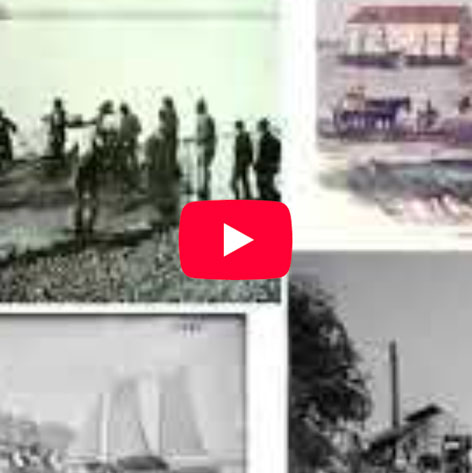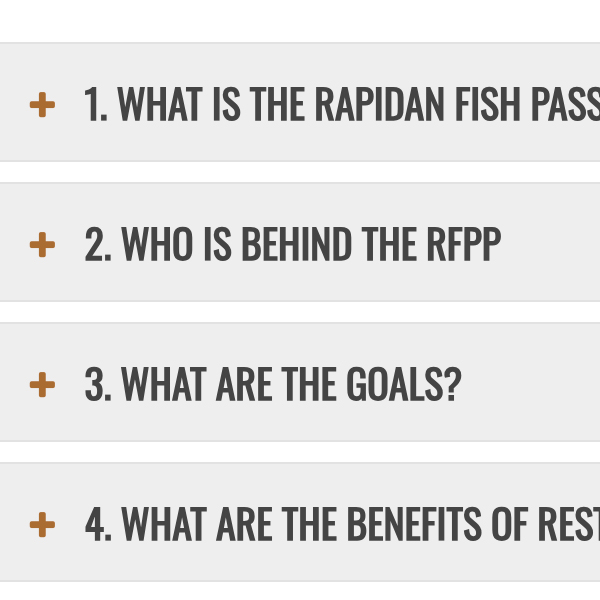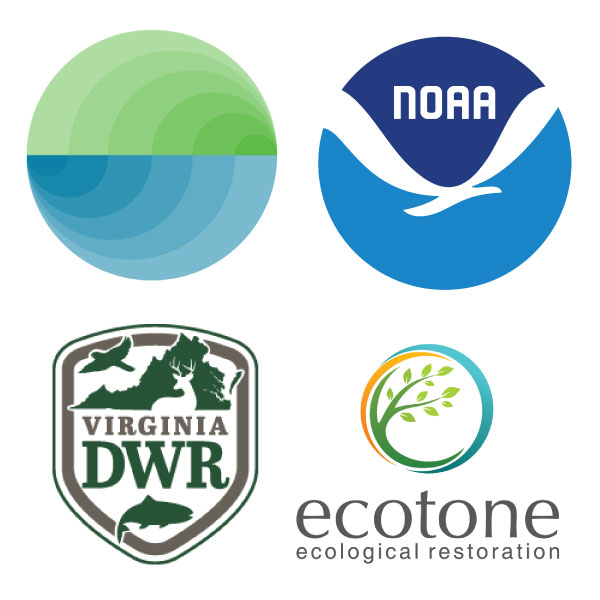The Institute provides transformational shifts in Eastern rivers management through innovations in conservation, biodiversity, and climate mitigation programming.
Rapidan Institute was created in 2020 to enable American Climate Partners to focus on comprehensive fisheries and floodplain habitat restoration in the Rapidan and Robinson River Valleys. The Institute’s operational strategies include the enhancement of soil, plant, and animal biodiversity, river reconnection and whole floodplain restoration using innovative and cost-effective biology-based strategies, and development of emerging conservation-friendly agricultural and environmental markets.
The Institute’s focus on innovation is timely. According to a June, 2023 Congressional Research Publication – Status of Efforts to Restore Chesapeake Bay Water Quality, many challenges remain with the Bay program.
“Progress Toward 2025 Goals – Although the Bay jurisdictions have made progress in implementing practices and controls to achieve TMDL goals, EPA indicates that the jurisdictions are “off course” in meeting their goals. Bay jurisdictions have reported that, as of 2021, they have BMPs in place to achieve 49% of the nitrogen reductions, 64% of the phosphorus reductions, and 100% of the sediment reductions needed to attain applicable water quality standards when compared to the 2009 baseline established in the Bay TMDL. In FY2024, EPA plans to evaluate progress toward meeting the 2022-2023 milestone commitments.
Challenges – EPA and other stakeholders acknowledge that, despite progress in reducing pollutants to the Bay, challenges in achieving the TMDL goals and improving the Bay’s water quality remain. While jurisdictions’ efforts have prevented a significant increase in pollution, they face challenges in meeting targets due to factors such as land use changes, population growth, changes in climate, and the voluntary nature of BMPs implemented to address nonpoint source pollution. EPA’s Chesapeake Bay Program (CBP) estimates that 27% of the Bay area met water quality standards in 1985, improving to the mid-30% range by 2020.”
Status of Efforts to Restore Chesapeake Bay Water Quality, Congressional Research Service, June 2023

American Climate Partners Board and Directors and Staff hope the Institute’s projects (below) provide some new paths for progress in helping restore this globally significant estuary.
Rapidan Fish Passage Project
The Rapidan Fish Passage Project (RFPP) is a nationally significant conservation project focused on river flow restoration and migratory fish passage. Restoring river flow with alteration of the defunct (since 2019) Rapidan Mill dam (RMD) will open 540–1,065 miles of upstream habitat to migratory species, including Striped Bass, River Herring and American Shad, as well as American Eel and Sea Lamprey. This restoration would benefit up to 9 native species that are in decline. Striped Bass and American Shad are American icons that have been extremely important to all populations of the Chesapeake Bay Region dating back to the original indigenous people of the region.
Conservation experts regard this project as the fourth highest priority project of its kind overall in the Chesapeake Bay watershed, behind only the Conowingo Dam (Susquehanna River), Boshers Dam (James River, VA), and Brasfield Dam (Appomattox River, VA). It was classified as a Tier 1 priority for Chesapeake Bay-wide anadromous species and a Tier 2 priority for resident species by The Nature Conservancy in 2022.
Perdue Experimental Station
The Perdue Experimental Station (PES) is an applied research facility located at the home of Elizabeth and David Perdue at Liberty Hill, at Liberty Mills, Virginia. Liberty Hill is located roughly 20 miles upstream of the Institute’s headquarters in Rapidan, Virginia. The Station provides a location to study strategies and practices to improve the resiliency of a low elevation headwater floodplain ecosystem. Since 2016, staff from the SoilKeepers, with the financial support of the Perdue family, have been conducting trials on a variety of annual and perennial grasses, legumes, and forbs to reduce the energy of flood events and thereby help to reduce scouring of the river in-stream system.
A key strategy developed at PES is the use of piedmont floodplain tree nuts for cost effective tree regeneration coupled with establishment of native warm season grasses and wildflowers in strips to facilitate conversion of floodplain pasture and hayfield while thwarting establishment of invasive species.
This method of floodplain restoration has now been employed on many miles of additional floodplain on the Rapidan River.
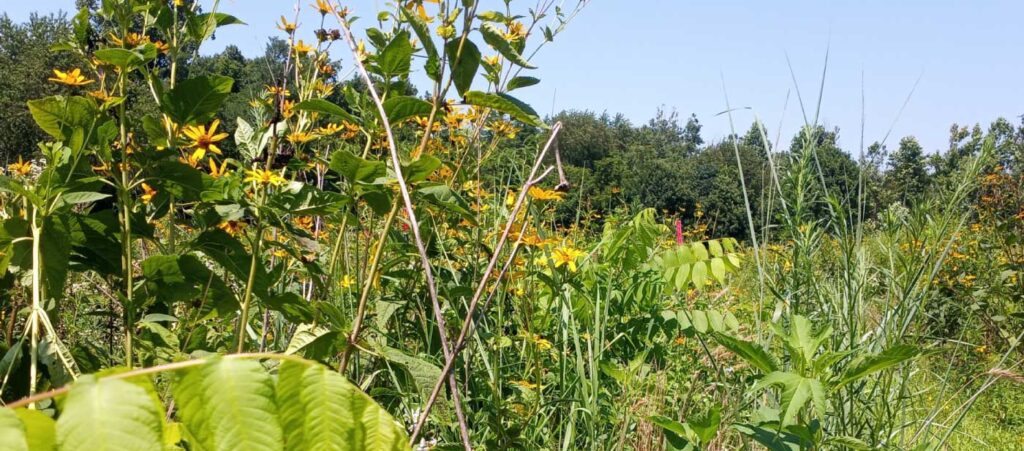
Rapidan Watershed Resiliency Plan
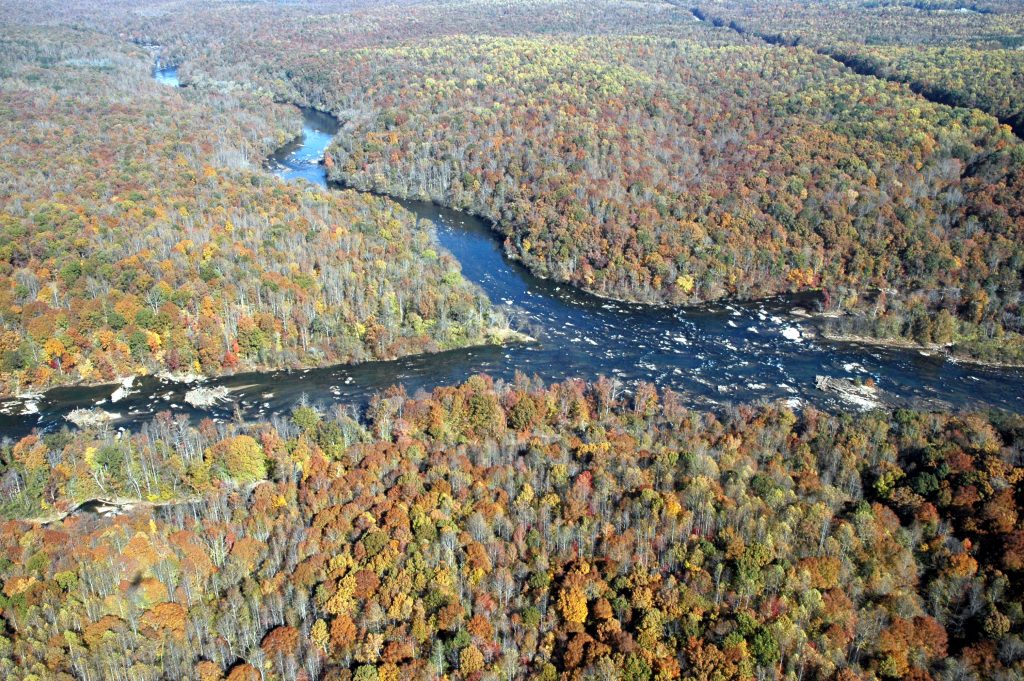
The riverbeds of the Rapidan and Robinson Rivers, like many East Coast rivers today, have dropped significantly below their floodplains. Based on work conducted at the Perdue Experimental Station and by SoilKeepers (American Climate Partners regenerative landscape management contracting program) at other sites, we believe this phenomenon of disconnection between a river and its floodplain may be the most important issue to address to meet non-point source Chesapeake Bay water quality goals. In the future we hope to launch with Partners a river reconnection focused resiliency plan for the watershed.
Virginia Beaver Working Group Group
SoilKeepers, an implementation arm of Rapidan Institute, has been working on the use of woody debris and woody debris structures in other areas of the Piedmont (below) in an effort to learn how to reconnect river/stream floodplain cost effectively.
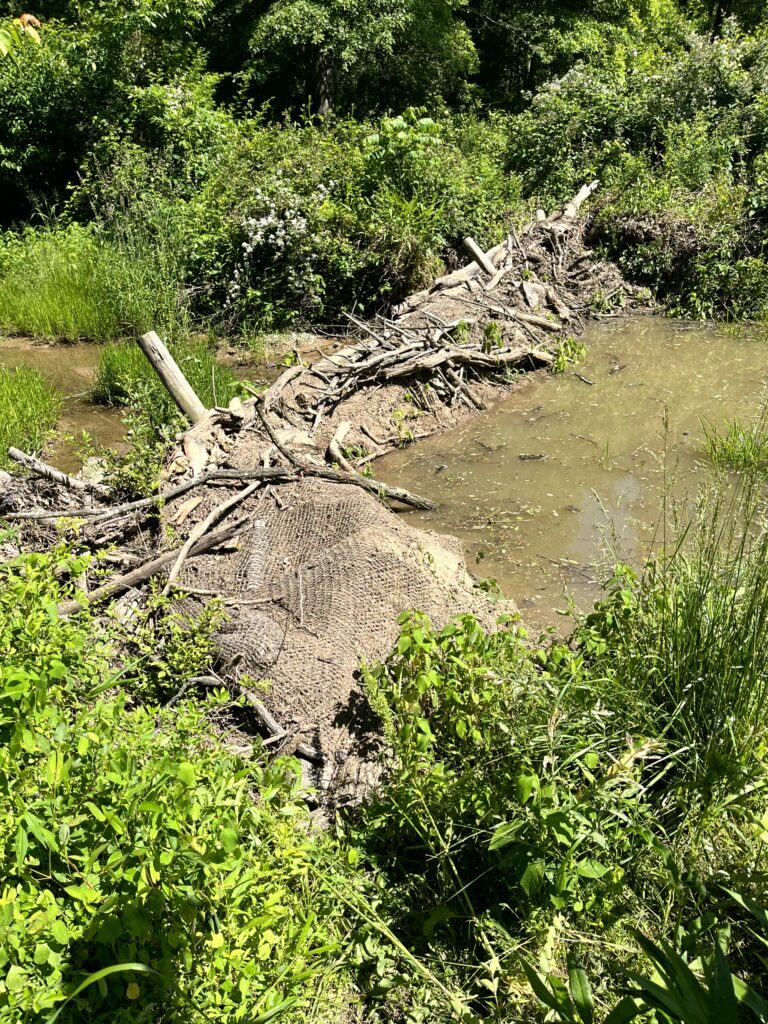
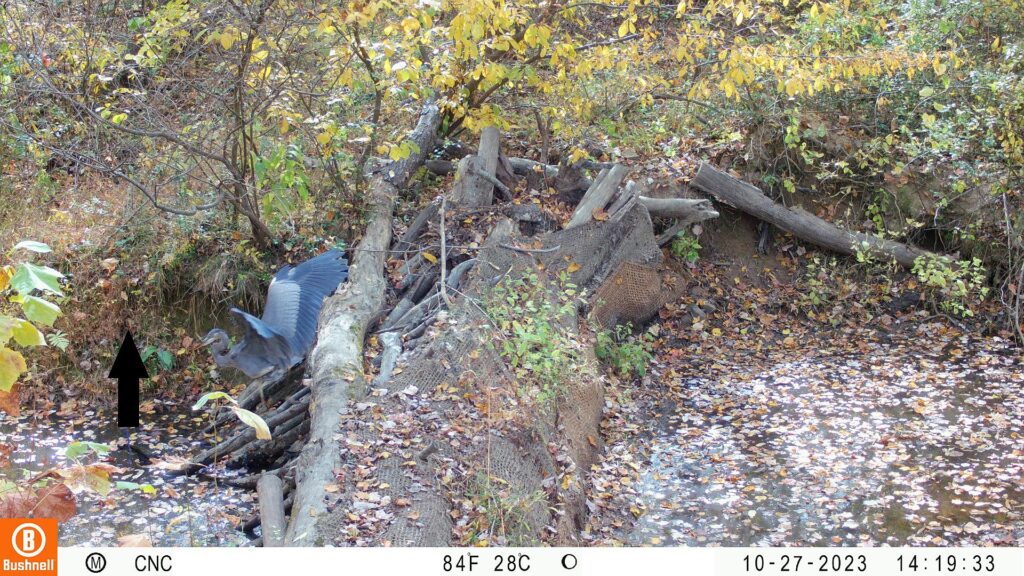
In late 2024 we hope to launch with Partners a Virginia statewide focus group to deliberate on if and how it might be possible to deploy beaver like structures along with beavers as a wildlife and riparian habitat conservation goal as well as an implementation strategy to improve water quality on Virginia rivers and streams.
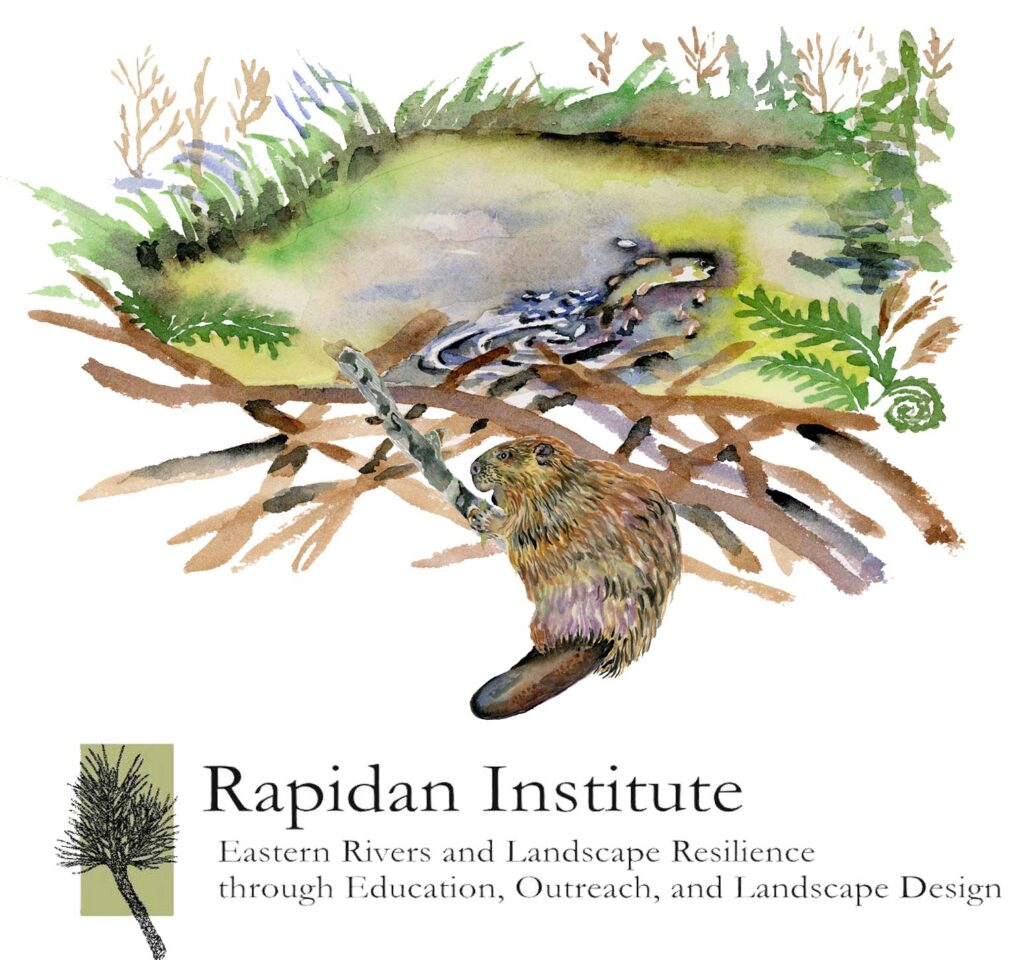
ABOUT THE RAPIDAN RIVER VALLEY
The rich lands and waters of the Rapidan River watershed have supported our people and communities for almost 400 years. At settlement, the Rapidan was teeming with shad and herring. Timber was plentiful, and the soils along the bottomlands were immensely fertile. Beavers dammed small streams into beaver meadows that slowed flood waters and captured sediment. Regular fires resulted in mixed fields of native species where bobwhite quail and other species thrived.Since then, battles have been fought, a future president was born and lived at Somerset, and mills and mill dams were built and eventually fell away. The beavers were trapped out for hides, and the bottomlands cleared and drained for fields. Much of the timber was harvested to build cities to the north and south. Streams were choked with sediment. Bobwhites were diminished to a small fraction of their former abundance. Shad runs were terminated with dams. Our use of fossil fuels has resulted in a warming climate and a higher likelihood of extreme weather events.
Even so, the Rapidan River Valley fared better than watersheds in other parts of the Commonwealth, and the opportunity still exists to recover much of what was lost. There are still shad trying to make it up river. There are still beavers trying to make a living in banks and ponds. There are still bobwhites calling in a few places. Soil fertility has declined, but it’s not so far gone it can’t be recovered. New technologies are becoming available to reduce greenhouse gas emissions.
It’s up to us to try and steer the Valley towards a balance between the needs of the community and the needs of the natural systems that support the quality of life we have come to expect for ourselves and future generations. Time and money are short, so the best strategies are those that achieve multiple objectives. Each strategy needs to work for people and landowners aesthetically and profitably.

